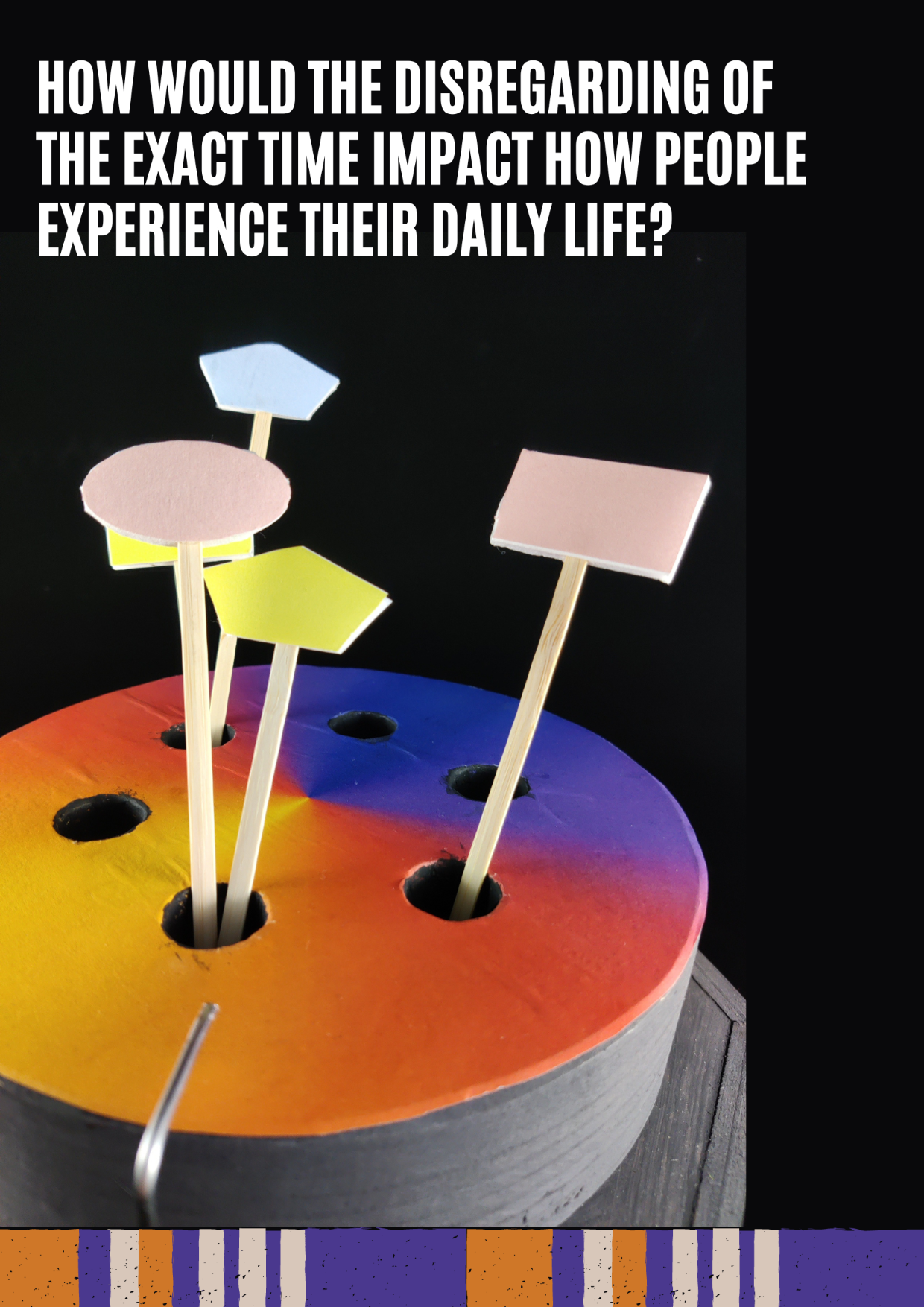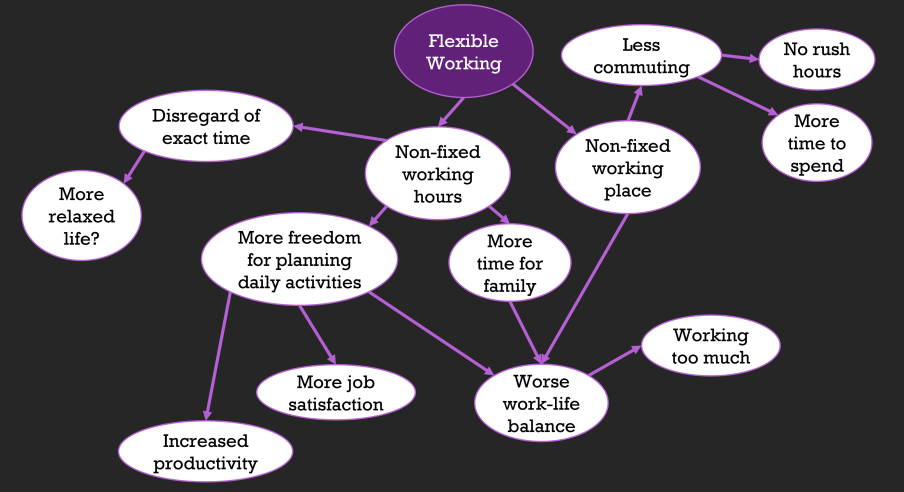 16 June 2022
16 June 2022
Disregarding of the exact time
In this research project my team and I looked into the future of time. Or more specifically, how we as human beings will perceive time. We identified some upcoming current trends like the automation of production lines, increased awareness of mental health, and the increase of virtual working (especially during the COVID pandemic). A potential result of all of these trends, is more flexible working. Through a futures wheel, we reasoned that flexible working can result in non-fixed working hours, which could mean that the exact time won’t be as important anymore for everyone. Perhaps, instead of starting work at 8:00, people could start working in the morning and keep going until the late afternoon, with a lunch break somewhere in between. This disregarding of the exact time was explored further within our design research.

Autoethnographic experiment
After identifying the topic, we started with an autoethnographic study to try to find out for ourselves what living without an exact time can mean. As someone who always wears a watch and is almost addicted to knowing what time it is, I took this experiment the furthest by removing or covering the clock from my electronic devices (phone, tablet, laptop and desktop) and stopping or avoiding clocks in my house and surroundings. I did this for 6 consecutive days, of course still being able to check the time when I needed to and documenting all of these occurrences.
Some findings of this experiment were that for events like meetings, the starting time is more important than the ending time. This was one of the main reasons of looking at a clock: How long do I still have until …? Personally, I did not always look at a clock for this. The line in the digital agenda on my phone was enough to tell me if a meeting was coming up. This showed us that knowing the exact time is not always necessary to know when an event will start. Although at first it was a little difficult to get used to not having a watch around my arm and looking at an empty wrist a few times, this was a nice experience and actually lead to a more relaxed feeling.
Magic machine workshop
We organised a magic machine workshop with five participants. In this workshop, we first introduced and talked about the topic of disregarding the exact time. Then, we gave the participants some quirky materials like paper cups, wooden cutlery, straws and egg cartons and asked them to make a “magic machine” from these materials. It should help them synchronise with other people in their lives in a future as described earlier. What else their machine should do, was entirely up to them.

The machines created by the participants showed us three trends: Group use, planners and timers. Two of the 3 planning machines created (a and c) were meant to be used by a group of people, where one (b) was to be used by individuals. One interesting observation was that none of the participants used any kind of digital technology, all machines were tangible. We used the results of the magic machine workshop as inspiration for our own design based on calm technology, along with our findings from the autoethnographic experiment and literature.
Design artefact
We created two design concepts to show the time in an abstract way: A planner and a balancer. The balancer, a beam with two containers on either side representing two activities. When doing one activity, the user can let the water drip into this container. This way, balance between the activities can be maintained by making sure the design stays balanced. One notable example is the balance between rest and work during a working day. Since the two activities might not require the same amount of time (you can take short breaks in a long working day), the base of the balancer can be moved to change the ratio between the activities. Keeping your life balanced can help with mental health.

Our main prototype, which was also used in our follow-up study, was the abstract planner. It is a round disk which makes a full rotation every 24 hours, like earth. The colours correspond with the time of day, allowing the user to see approximately what time of day it is. Users can write something they want to do on a flag, which can be placed in one of the 6 holes. This way, the user can approximately plan their day and because of the rotation, they can see when a planned event is approaching. The flags have different colours, allowing multiple users to use the same planner and see each other’s planning. The four different shapes of flags can be used to make categories, which are open to personal application by the user.

User diary study
We performed a diary study where one participant (and their family) used the planner for a duration of 3 days. They received a booklet with instructions and an assignment for every day. During the day the participant could write down their thoughts and feelings, in the evening they could reflect on the usage of the device. While at first there were some frustrations and confusion, eventually they found a way they can use the device. A limitation the participant experienced was related to spontaneous activities that were not planned at the start of the day. Eventually, they decided to only place this spontaneous activity in the device if it were to happen later that day, otherwise they would simply do the activity without planning it beforehand.
For our participant, it became easier over time to use the device. They also noted that they believe something like this would be more suitable for people with a flexible job, since they depend less on the exact time. This was also in line with our original expectations, after all the idea for this device originated with the trend of flexible working becoming increasingly common. And while a future with the exact time being disregarded would require a huge cultural and societal shift, which is unlikely to ever happen, the goal to introduce a possible future was achieved in this project. This project was very speculative in nature, which is a nice thing to learn and in some cases results in true innovation.
tags: Research - prototype - artifact - diary - study - autoethnographic